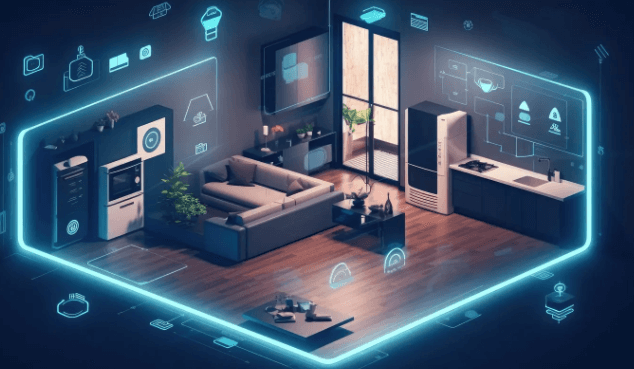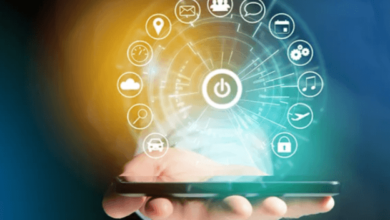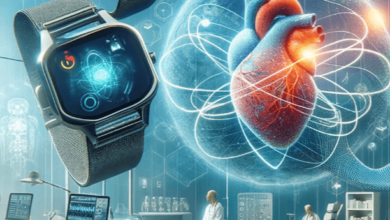What technological innovations are driving the future of smart homes and connected devices?

Introduction
In today’s rapidly evolving world, smart homes and connected devices are at the forefront of technological innovation. These advancements are not just about convenience; they are revolutionizing the way we live, offering enhanced security, energy efficiency, and a higher quality of life. From artificial intelligence to the Internet of Things (IoT), the future of smart homes is being shaped by a plethora of cutting-edge technologies. This article delves into the most significant technological innovations driving this transformation, exploring how they are set to redefine our living spaces.
The Role of Artificial Intelligence in Smart Homes
Artificial intelligence (AI) is one of the most transformative technologies in the realm of smart homes. AI-powered systems learn from user behaviors, making homes more responsive and intuitive. These systems can control lighting, climate, security, and even entertainment based on the preferences and routines of the occupants.
AI Assistants and Voice Control
Voice-activated AI assistants like Amazon Alexa, Google Assistant, and Apple’s Siri have become household staples. These devices can perform a wide array of tasks, from setting reminders and controlling smart home devices to providing information and making purchases. Their ability to understand and respond to natural language makes them incredibly user-friendly.
Machine Learning for Predictive Automation
Machine learning, a subset of AI, enables smart home systems to predict user needs and automate functions accordingly. For example, smart thermostats like Nest learn your schedule and temperature preferences, adjusting settings automatically to optimize comfort and energy usage.
Internet of Things (IoT) Connectivity
The Internet of Things (IoT) is the backbone of connected devices in smart homes. IoT refers to the network of physical objects embedded with sensors, software, and other technologies to connect and exchange data with other devices and systems over the internet.
Smart Sensors and Automation
IoT devices are equipped with sensors that monitor various parameters such as temperature, humidity, motion, and light. These sensors enable automation, allowing the home to adjust settings automatically. For instance, smart lights can turn on when someone enters a room and turn off when it’s unoccupied, conserving energy.
Interoperability and Integration
One of the significant challenges and advancements in IoT is achieving interoperability between different devices and platforms. Technologies like Zigbee, Z-Wave, and Matter are working towards creating a seamless integration, allowing various smart devices to communicate and work together effectively.
Advancements in Home Security
Home security systems have seen tremendous advancements with the integration of smart technology. These systems offer enhanced protection and peace of mind through real-time monitoring, alerts, and automated responses.
Smart Surveillance Cameras
Modern surveillance cameras come with features like high-definition video, night vision, motion detection, and cloud storage. Some advanced models also incorporate facial recognition technology, allowing them to differentiate between family members, guests, and potential intruders.
Smart Locks and Access Control
Smart locks offer keyless entry options such as biometric recognition, smartphone control, and keypad entry. These locks can be integrated with other smart home systems, providing detailed access logs and remote locking/unlocking capabilities.
Energy Efficiency and Smart Grids
Energy management is a critical aspect of smart homes. Innovations in this area are not only about reducing utility bills but also about creating a more sustainable living environment.
Smart Thermostats and Climate Control
Devices like the Ecobee and Nest thermostats learn user preferences and optimize heating and cooling schedules. They also provide insights into energy usage, helping homeowners make informed decisions to reduce consumption.
Integration with Smart Grids
Smart homes are increasingly being integrated with smart grids, which use digital technology to manage electricity demand efficiently. This integration allows for dynamic pricing, demand response, and the use of renewable energy sources, contributing to overall energy efficiency and sustainability.
Health and Wellness Technology
The intersection of smart home technology and health is creating new opportunities for enhancing well-being. From fitness tracking to health monitoring, these innovations are making homes more conducive to a healthy lifestyle.
Smart Wearables and Health Monitoring
Wearable devices like smartwatches and fitness trackers monitor vital signs, physical activity, and sleep patterns. These devices can sync with smart home systems to provide personalized health insights and recommendations.
Air Quality and Environmental Sensors
Indoor air quality monitors detect pollutants and allergens, providing real-time data and alerts. Smart purifiers can then be activated automatically to ensure a healthy living environment. Additionally, environmental sensors can monitor humidity and temperature to prevent mold growth and maintain comfort.
The Impact of 5G on Smart Homes
The rollout of 5G technology promises to significantly enhance the capabilities of smart homes. With its high-speed, low-latency connectivity, 5G enables more reliable and faster communication between devices.
Enhanced Connectivity and Real-Time Responses
5G facilitates real-time responses and interactions between smart devices. This means quicker execution of commands and more seamless operation of home automation systems, enhancing the overall user experience.
Expansion of IoT Ecosystem
The increased bandwidth of 5G supports a larger number of connected devices, enabling the expansion of the IoT ecosystem within homes. This allows for more complex and comprehensive smart home setups, integrating a wider array of devices and services.
Augmented Reality (AR) and Virtual Reality (VR) in Home Design
AR and VR technologies are transforming the way we design and interact with our living spaces. These technologies provide immersive experiences that can aid in home planning and enhance daily activities.
Virtual Home Tours and Interior Design
VR allows homeowners to take virtual tours of properties and visualize design changes before making physical alterations. This technology is particularly useful for architects and interior designers to showcase their ideas to clients.
AR for Interactive Home Management
AR applications can provide interactive overlays on smart devices, guiding users through troubleshooting or offering information about appliance usage. This makes managing and maintaining smart home systems more intuitive.
Blockchain Technology and Data Security
As smart homes become more interconnected, the security and privacy of data are paramount. Blockchain technology offers a promising solution for securing smart home ecosystems.
Decentralized Security Solutions
Blockchain provides a decentralized approach to security, reducing the risk of hacking and unauthorized access. Smart contracts can automate and secure transactions between devices, ensuring data integrity.
Enhanced Privacy Protection
With blockchain, users can have greater control over their data, deciding who can access it and for what purposes. This enhanced privacy protection is crucial as more personal information is generated and stored by smart home devices.
Sustainable and Eco-Friendly Innovations
Sustainability is a key consideration in the development of smart home technologies. Innovations aimed at reducing environmental impact are becoming more prevalent.
Solar Energy Integration
Smart homes are increasingly integrating solar panels and energy storage systems. These systems not only reduce reliance on fossil fuels but also allow homeowners to manage their energy consumption more effectively.
Water Conservation Technologies
Smart irrigation systems and water-saving fixtures help conserve water by optimizing usage. These technologies can monitor soil moisture levels and weather conditions to adjust watering schedules, ensuring efficient water use.
Conclusion
The future of smart homes and connected devices is brimming with potential. As technological innovations continue to advance, our living spaces will become more intelligent, efficient, and responsive to our needs. From AI and IoT to 5G and blockchain, these technologies are driving a revolution in home automation, promising a future where homes are not just places to live but dynamic environments that enhance our quality of life. Embracing these innovations will undoubtedly pave the way for smarter, safer, and more sustainable homes.




